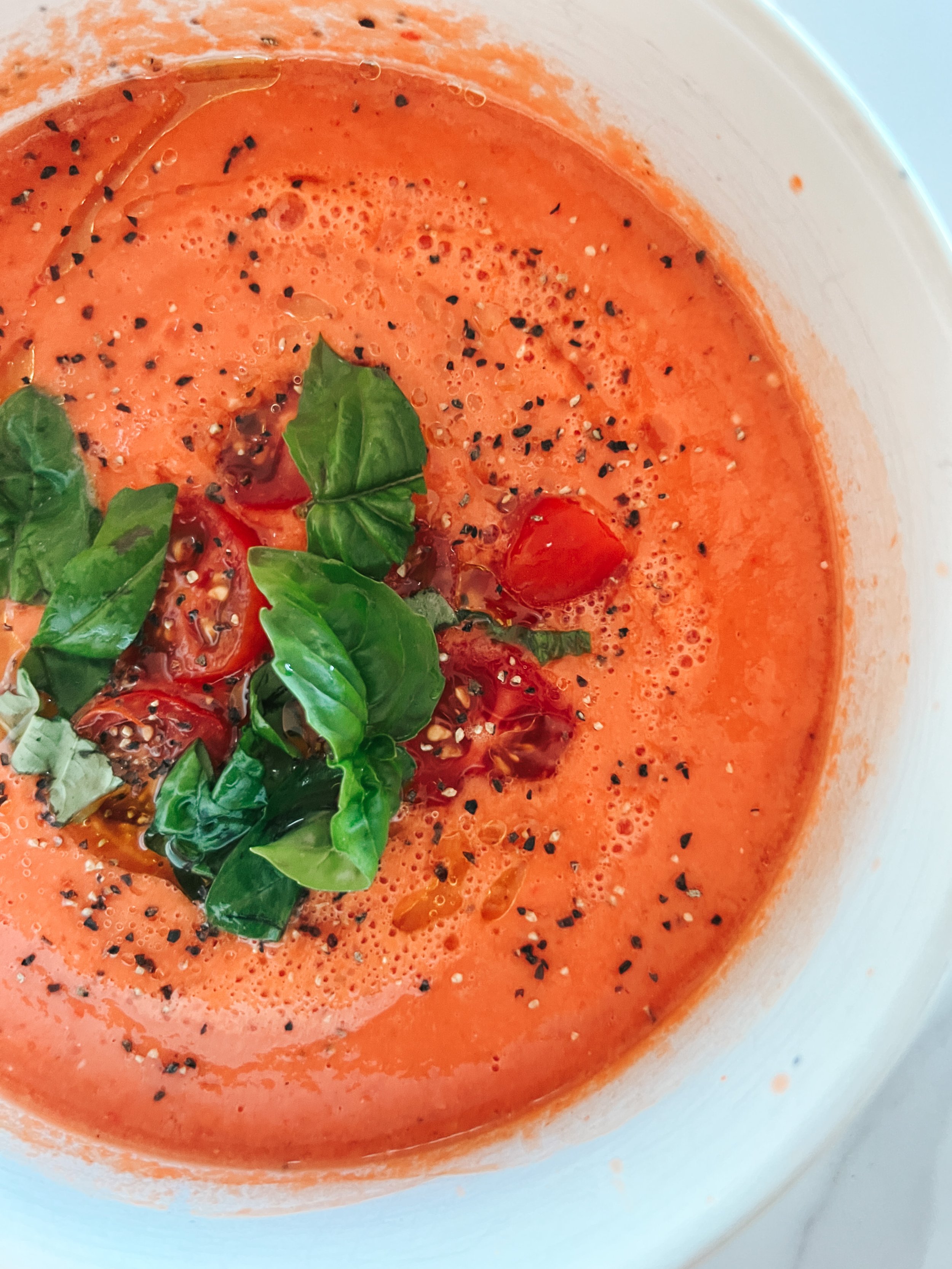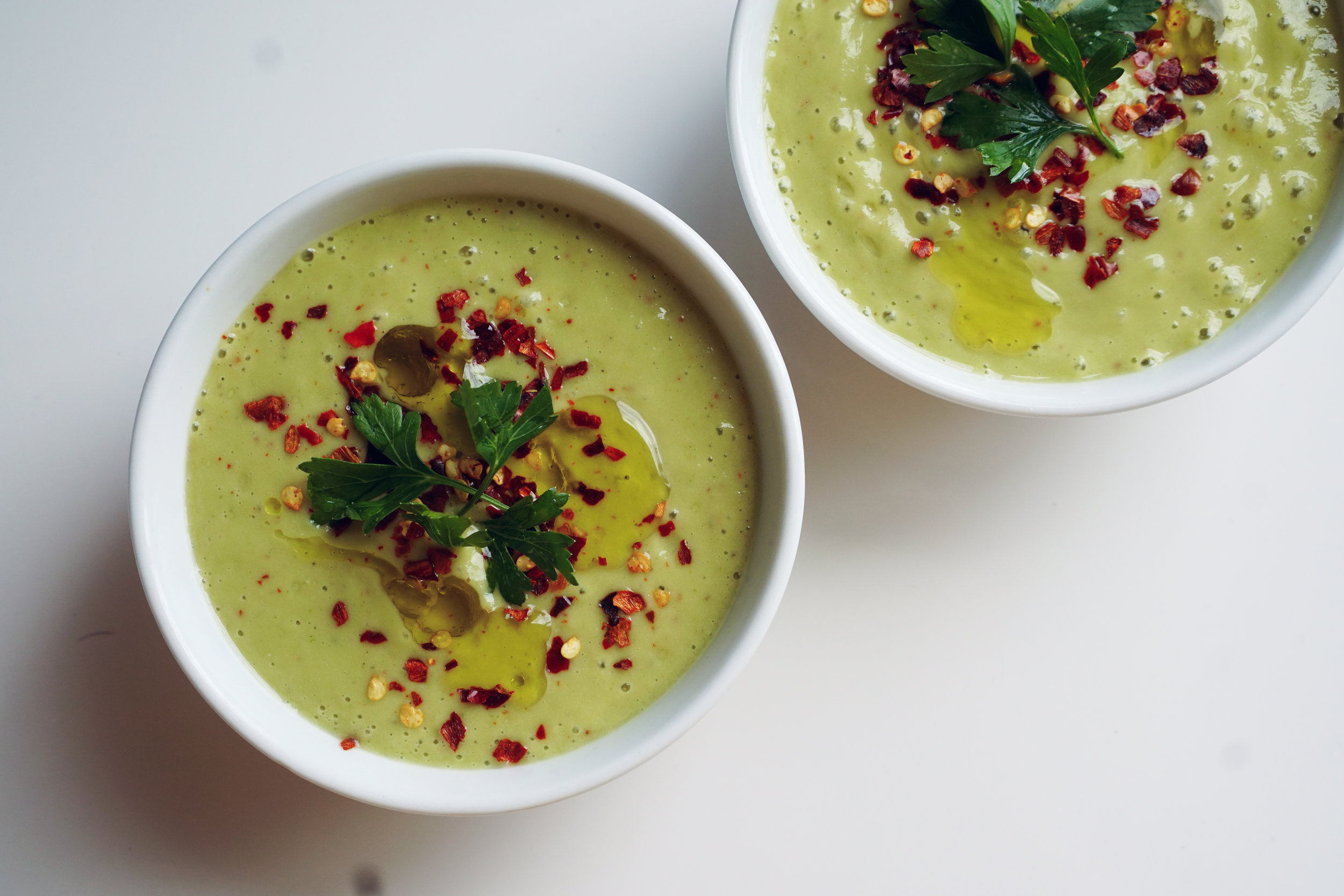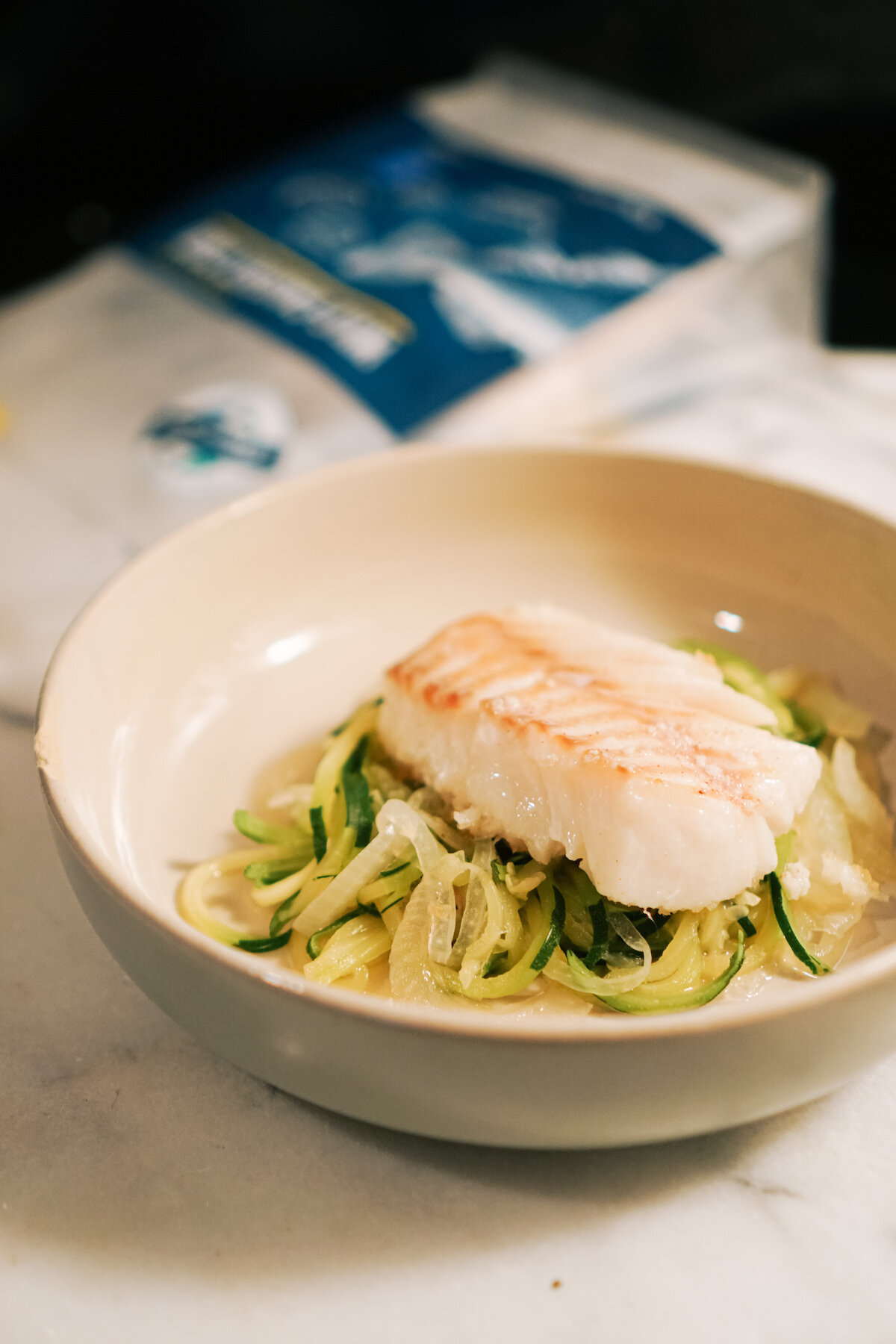Escape to the Mediterranean: Indulge in a Taste of Spain with Our Gazpacho Recipe
We are delighted to share with you the best-selling gazpacho recipe in Spain. Gazpacho is a refreshing and healthy chilled soup that perfectly captures the essence of Spanish cuisine. Bursting with the freshness of vine-ripened tomatoes, crisp vegetables, and a delightful blend of seasonings, this gazpacho recipe is a must-try for all food enthusiasts. Whether you're looking for a light summer meal, a vibrant appetizer, or a unique addition to your culinary repertoire, this recipe has you covered. Let's dive in and discover the secrets to creating this traditional Spanish delight!
Gazpacho: A Personal Journey into the Vibrant Spanish Chilled Soup
I have had the privilege of exploring the diverse culinary landscapes of various countries. Among the countless dishes that have left a lasting impression on my palate, Gazpacho holds a special place in my heart. This delightful Spanish chilled soup has become a beloved part of my culinary repertoire, which I crave even thousands of miles away from Madrid's picturesque streets.
My love affair with Gazpacho began when I first moved to Madrid. The warm temperatures of this vibrant city drew me to seek solace in the refreshing flavors of Gazpacho. It's also easy to notice at grocery stores and markets, with shoppers having dozens of options of brands to pick from, should they choose to buy it when pinched on time. It quickly became my go-to dish during those warm months, providing a much-needed respite from the sweltering heat. Sipping on a chilled bowl of Gazpacho became integral to my Spanish experience, leaving me with a newfound appreciation for this traditional Andalusian creation.
What truly deepened my connection with Gazpacho was the nostalgia it evoked when I visited my family and friends back in California. As I sat around the table, sharing stories and laughter, the taste of Gazpacho transported me back to the sun-drenched days spent in Madrid. It symbolized the cherished moments and the bond I shared with loved ones, bridging the gap between two worlds.
Eager to recreate those cherished memories and savor the flavors of my adopted home, I embarked on a quest to learn the art of making Gazpacho. I immersed myself in the vibrant markets of Madrid, carefully selecting the freshest vine-ripened tomatoes, crisp cucumbers, and aromatic herbs. In my kitchen, surrounded by garlic and olive oil aromas, I blended the ingredients with care and precision. As the flavors melded, I felt a sense of accomplishment and a connection to the culinary traditions that had captivated generations of Spaniards.
Now, whenever I prepare Gazpacho, I am transported back to those unforgettable moments in Madrid. It has become more than just a dish; it is a testament to the journey I have embarked upon, both as a food enthusiast and as someone who has embraced the beauty of different cultures. Gazpacho has taught me the importance of cherishing culinary traditions, creating lasting memories, and sharing the joys of food with those dear to my heart.
As I continue to explore the world of gastronomy, Gazpacho remains an essential part of my culinary repertoire. Its vibrant flavors, refreshing qualities, and the memories it evokes make it a cherished dish that I eagerly share with others. Whether you stroll through the charming streets of Madrid or longing for a taste of Spain from afar, I invite you to embrace the vibrant world of Gazpacho and experience the joy it brings.
Source: Unsplash, Andalucia, Spain
The Absence of Bread in Traditional Gazpacho and the Confusion with Salmorejo in the US
In its traditional form, Gazpacho does not include bread as one of its primary ingredients. The essence of Gazpacho lies in its simplicity and the use of fresh vegetables, particularly tomatoes, bell peppers, cucumbers, onions, and garlic. This combination creates a vibrant and refreshing chilled soup that showcases the ingredients' natural flavors. The absence of bread allows the focus to remain on the freshness and balance of the vegetables, resulting in a lighter and more liquid consistency.
However, it is worth noting that regional variations of Gazpacho incorporate bread as a thickening agent. For instance, in certain areas of Spain, such as Extremadura and La Mancha, a "gazpacho manchego" variation includes bread and other ingredients like meat or game. This variation differs significantly from the traditional Gazpacho commonly associated with Andalusia.
The confusion between Gazpacho and another popular Spanish chilled soup, salmorejo, often arises in the United States. Salmorejo, which hails from the southern region of Spain, specifically Cordoba, is similar to Gazpacho in chilled tomato-based soup. However, salmorejo is known for its creamier and thicker texture, achieved by adding bread, olive oil, and sometimes hard-boiled eggs. This distinction in texture and ingredients sets salmorejo apart from the traditional gazpacho recipe.
The confusion between Gazpacho and salmorejo in the United States may stem from the popularity of both dishes in Spanish cuisine and their availability in restaurants or recipe adaptations. While both soups share similarities, it's important to recognize the nuances that differentiate them. Gazpacho remains true to its roots as a light and refreshing tomato-based soup, while salmorejo offers a creamier and heartier alternative with bread.
By understanding the traditional ingredients and characteristics of Gazpacho and its distinction from salmorejo, we can appreciate the unique qualities of each soup and enjoy the diversity of Spanish culinary delights.
Exploring the Ingredients
One of the key aspects of Gazpacho is using fresh, seasonal ingredients. The traditional gazpacho recipe typically includes vine-ripened tomatoes, bell peppers, cucumbers, onions, garlic, olive oil, vinegar, and a hint of salt. These ingredients come together to create a symphony of flavors that are both refreshing and satisfying. While the classic recipe remains popular, Gazpacho has also embraced culinary creativity, giving rise to variations incorporating fruits, herbs, and seafood.
Gazpacho: A Nutritional Powerhouse
Beyond its delicious taste, Gazpacho offers an array of health benefits. Packed with vitamins, minerals, and antioxidants, this chilled soup is a fantastic way to incorporate nutrient-rich vegetables into your diet. The tomatoes in Gazpacho are a great source of lycopene, a powerful antioxidant known for its potential cancer-fighting properties. The combination of fresh vegetables and olive oil provides essential vitamins, healthy fats, and dietary fiber, making Gazpacho a nourishing choice for those seeking a balanced and wholesome meal.
The Best Gazpacho Recipe
The Best-Selling Gazpacho Recipe in Spain
Ingredients for Gazpacho
To make this authentic gazpacho recipe, you will need the following ingredients:
7 medium-sized vine-ripened tomatoes that smell like tomato
2 red bell peppers from your local area
1 good quality local onion
1 compact cucumber
1 clove of garlic
2 tbsp of extra virgin olive oil
2 tbsp of wine vinegar
Juice of 2 lemons
1 tbsp of salt
For garnish, you can use ground black pepper, basil, and a drizzle of olive oil to taste.
Step-by-Step Instructions
1. Prepare the Tomatoes
Start by cutting the tomatoes in the shape of a cross at the base. Blanch them for 20 seconds in boiling water, then transfer them to a bowl of ice water to stop cooking. Peel the tomatoes, remove the stems, and chop them into small pieces.
2. Chop and Blend the Vegetables
Peel the cucumber, onion, and garlic (removing the germ if necessary). Remove the stems, seeds, and nerves from the red bell peppers. Chop all the vegetables into small pieces. Transfer the chopped vegetables to a blender or a glass of the blender and blend until you achieve a fine texture. Blend the mixture for a few extra minutes for the best results to ensure a smooth consistency.
3. Calculate Seasonings
Once the vegetable mixture is ready, determine the quantity of the smoothie you have. Weigh it or use a 1.5L bottle to measure the volume in grams or milliliters. Let's say you have 1.4 liters (which equals 1,400 milliliters).
To calculate the amount of vinegar and oil needed, multiply the volume (1,400 ml) by 26 and divide the result by 930. This will give you the number of milliliters of vinegar and oil required. Similarly, multiply the volume by 10 and divide by 930 to determine the quantity of lemon juice needed. Multiply the volume by 8 and divide by 930 to find the grams of salt required.
If you prefer a simpler approach, fill a one-and-a-half liter bottle and add three tablespoons of oil, three tablespoons of vinegar, two tablespoons of lemon juice, and a heaping teaspoon of salt.
4. Season and Chill
Return the gazpacho smoothie to the glass or container and add the calculated quantities of vinegar, oil, lemon juice, and salt. Mix well to ensure proper emulsification and integration of flavors. Refrigerate the Gazpacho for at least two hours to allow the flavors to meld together and achieve the perfect chilled consistency.
5. Garnish and Serve
Before serving, garnish the Gazpacho with a sprinkle of ground black pepper, torn basil leaves, and a drizzle of olive oil to enhance the presentation and flavor profile. Serve the Gazpacho chilled in individual bowls or glasses, allowing your guests to savor the authentic taste of Spain.
Kitchen Equipment
To prepare this delicious gazpacho recipe, you will need the following kitchen equipment:
Cutting board and knife
Bowl with ice water
Measuring spoons
Food weighing scale (optional)
Glass or container for storing the Gazpacho
Serving bowls or glasses
Our Place The Perfect Pot
Available in 7 colors.
$165, Our Place
Bowls
Our Place, $45
Beast Blender & Hydration System Set
Whatever it is, the way you tell your story online can make all the difference.
Vitamix 5200 Blender
$511, Amazon
Immersion Blender
$40, Amazon
Food weighing scale
Available in 4 colours.
$14, Amazon
Storing Leftovers
If you have any leftover gazpacho, you can store it in an airtight container in the refrigerator for up to 2-3 days. Before serving, give it a good stir to recombine the flavors and adjust the seasoning if needed. Gazpacho is best enjoyed fresh, but it can still be a delightful treat even when chilled for a day or two.
Recipe Tips and Variations
For an extra burst of flavor, consider adding a dash of hot sauce or a pinch of cayenne pepper to the Gazpacho.
Customize the garnish by adding diced cucumbers, croutons, or a sprinkle of paprika for an added visual appeal.
Strain the Gazpacho through a fine-mesh sieve before chilling if you prefer a smoother texture.
Gazpacho pairs wonderfully with a variety of dishes. Serve it as a refreshing starter alongside tapas, grilled seafood, or a simple charcuterie board. It also complements Mediterranean-inspired salads and sandwiches.
Addressing Common Questions
Let's address some common questions that often arise when it comes to Gazpacho:
1. Can I use canned tomatoes for Gazpacho?
While fresh vine-ripened tomatoes are ideal for the authentic flavor of Gazpacho, high-quality canned tomatoes can be used as a substitute when fresh ones are unavailable. Opt for canned tomatoes without added salt or seasonings for the best results.
2. Is Gazpacho suitable for vegetarians and vegans?
Yes, Gazpacho is a vegetarian and vegan-friendly dish. It primarily consists of fresh vegetables and does not contain any animal products.
3. Can I make Gazpacho ahead of time?
Absolutely! Gazpacho is a wonderful make-ahead dish, perfect for entertaining or meal prep. Prepare it a day before and refrigerate overnight to allow the flavors to meld together. Just remember to give it a good stir before serving.
4. Are there variations of Gazpacho?
Yes, Gazpacho welcomes culinary creativity, and there are numerous variations to explore. Some popular variations include watermelon gazpacho, white Gazpacho (made with almonds), and seafood gazpacho (with added shrimp or crab).
5. How long can I store Gazpacho in the refrigerator?
Gazpacho can be stored in an airtight container in the refrigerator for 2-3 days. However, consuming it within 24-48 hours is recommended for the best flavor and texture.
Pairings and Serving Suggestions
Gazpacho can be enjoyed in various ways, making it a versatile addition to your culinary repertoire. Here are some suggestions for pairings and serving ideas:
Serve Gazpacho as a refreshing appetizer before a summer meal.
Pair it with crusty bread or croutons for a satisfying texture contrast.
Garnish with diced cucumbers, bell peppers, or fresh herbs for added visual appeal.
Gazpacho makes an excellent accompaniment to grilled seafood or a Mediterranean-inspired salad.
Consider serving Gazpacho in chilled shot glasses or small bowls for elegant individual portions at gatherings or parties.
Gazpacho: A Culinary Delight to Share and Savor
Gazpacho is more than just a chilled soup; it celebrates fresh ingredients, vibrant flavors, and the Mediterranean way of life. Its versatility, health benefits, and delightful taste have earned it a special place in Spanish cuisine and beyond. Whether seeking a light and refreshing meal or looking to impress your guests, Gazpacho is a culinary delight worth exploring. Embrace the flavors of Spain and share the joy of Gazpacho with friends and family. ¡Buen provecho!













